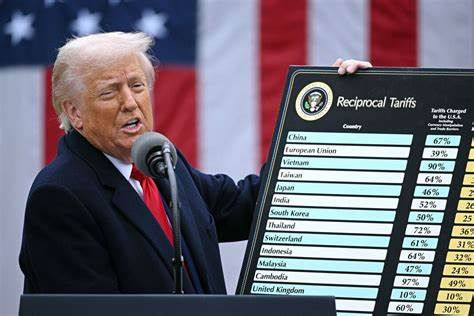Tariff Tensions Ignite Global Jitters: Is the World on the Brink of a Trade-Induced Recession?
- PrimePath Dev

- Apr 6
- 3 min read

In a dramatic escalation of global trade tensions, the United States is set to roll out a sweeping new round of tariffs this Wednesday, targeting a wide array of imports from China and other nations. In response, Beijing has announced a retaliatory measure—a sharp 34% tariff on key American exports—scheduled to go into effect just one day later.
The result? A wave of uncertainty crashing across global markets and a renewed sense of anxiety over the possibility of a recession fueled not by financial mismanagement, but by trade warfare.
Why It Matters Now
This is not the first time the world has watched the U.S. and China lock horns over trade, but this week’s developments feel different. These tariffs are broader, harsher, and are arriving at a moment when global economies are already wobbling from inflationary pressures, central bank tightening, and geopolitical unrest.
Major indexes, including the Dow and the S&P 500, have seen increased volatility over the past few days as institutional investors recalibrate risk. Safe-haven assets like gold and government bonds are once again in demand, while export-heavy sectors brace for impact.
What’s in the Tariff Package?
The U.S. package includes a blanket 10% tariff on most goods coming from all foreign nations, with additional punitive duties of up to 50% on Chinese tech, steel, automotive components, and certain green energy products. This is designed to curb Chinese dominance in strategic sectors and revitalize domestic manufacturing—but it comes at a price.
China’s retaliation targets U.S. agricultural exports, semiconductors, and high-end consumer goods, in what analysts say is a move aimed to hit rural America and Silicon Valley in equal measure.
Economic Ripple Effects
At face value, tariffs are a tool of negotiation. But beneath the surface, they often behave like a tax on the consumer and an anchor on growth.
“Every 1% increase in tariffs can shave 0.2 to 0.3% off GDP growth in the short term,” says Annalise Kerr, senior economist at the International Trade Forum. “Multiply that across sectors, and you’re looking at significant headwinds just as we were beginning to see stabilization.”
Small and medium-sized businesses, already battered by post-COVID inflation and labor shortages, are now facing supply chain disruptions and cost hikes. Consumers, too, may soon feel the pinch as prices on everyday goods—from electronics to groceries—creep upward.
Political Stakes Are Sky-High
With a U.S. presidential election on the horizon, the tariffs are as much a political maneuver as they are economic policy. Some see the move as an appeal to the industrial heartland, where voters have long been skeptical of globalization. In China, the government's swift response is meant to signal strength and defiance in the face of mounting pressure.
But while both governments may win political points at home, the global economy could be caught in the crossfire.
What Happens Next?
Markets will be watching closely for signs of negotiation—or escalation. Backchannel talks between the U.S. Trade Representative and Chinese officials are rumored to be ongoing, but neither side has publicly signaled a willingness to walk back the new tariffs.
In the meantime, multinational companies are rushing to diversify supply chains, investors are hedging for further volatility, and central banks are facing the difficult task of balancing inflation control with recession risks.
Final Thoughts
If the first quarter of 2025 was about cautious optimism, the second quarter is starting on a knife’s edge. The world has seen how quickly economic fortunes can shift when trade becomes a weapon. Whether cooler heads prevail or not, one thing is certain—businesses and consumers alike should brace for turbulence ahead.




Comments